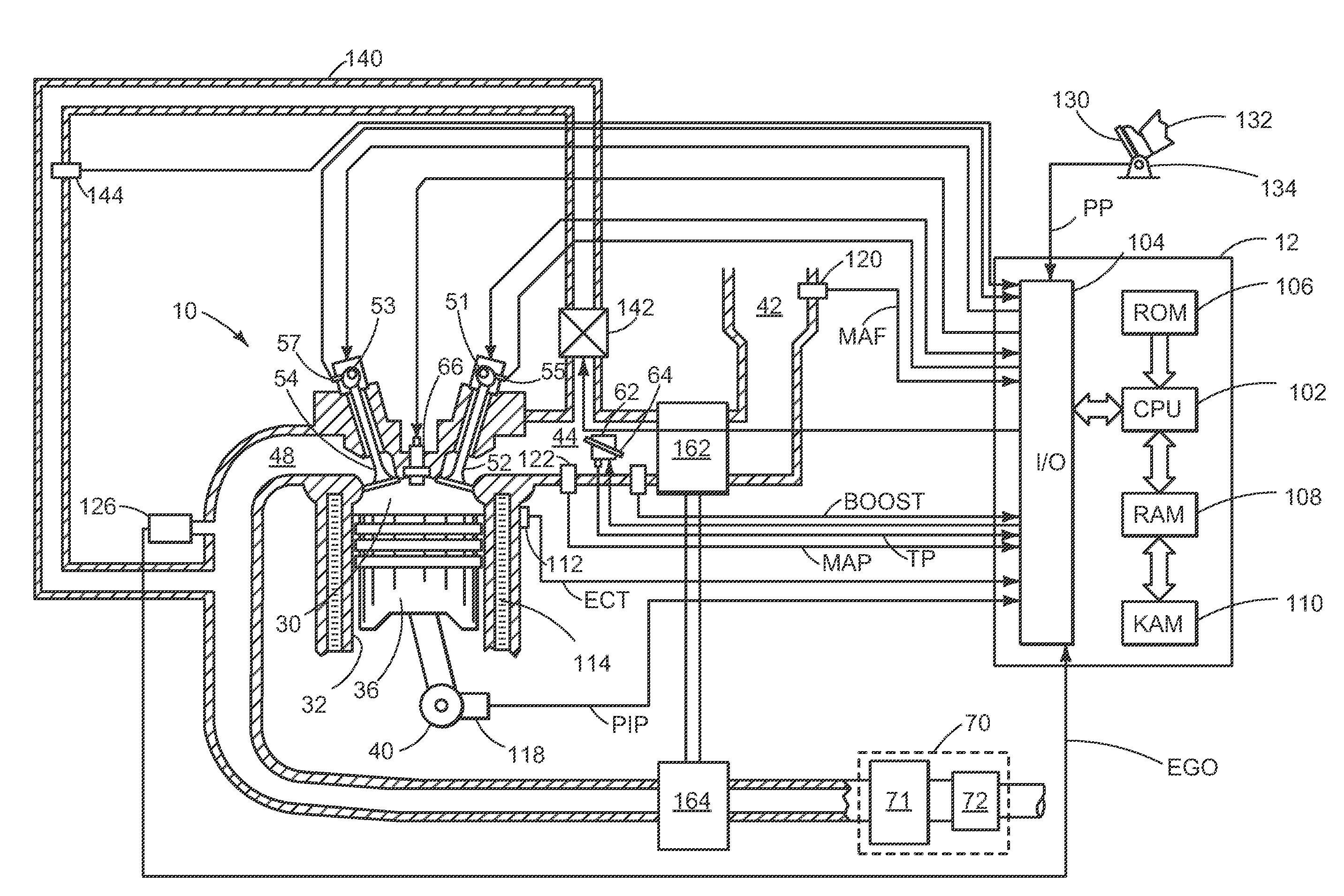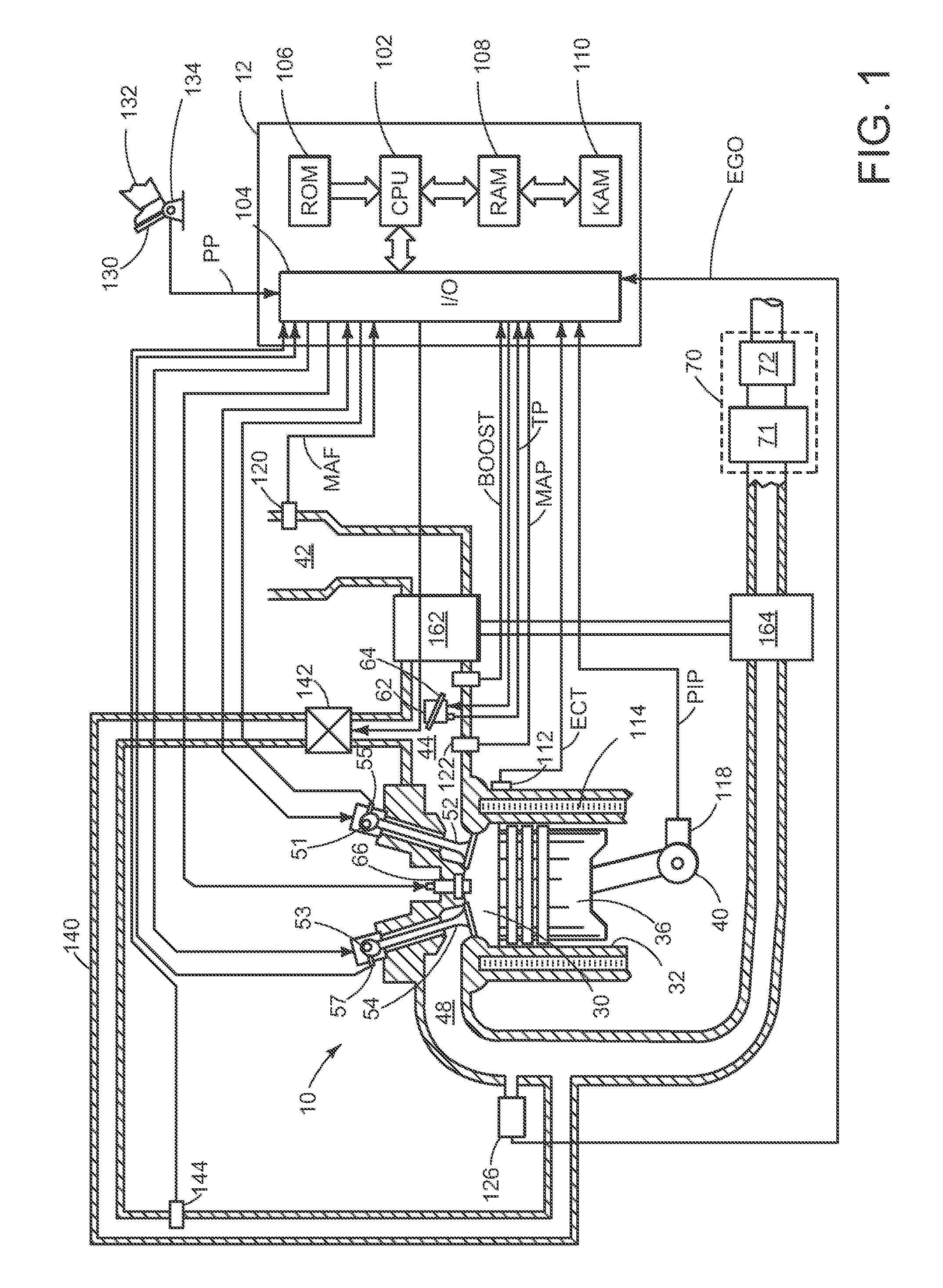Method for reducing urea deposits in an aftertreatment system
a technology of aftertreatment system and urea, which is applied in the direction of exhaust treatment electric control, electrical control, machines/engines, etc., can solve the problems of reducing nosub>x /sub>efficiency, urea deposits, and reducing nosub>x /sub>efficiency, so as to facilitate the reduction of nox and reduce emissions , the effect of reducing nox conversion efficiency
- Summary
- Abstract
- Description
- Claims
- Application Information
AI Technical Summary
Benefits of technology
Problems solved by technology
Method used
Image
Examples
Embodiment Construction
[0013]The following description relates to a method for controlling an aftertreatment system which includes a urea injection system, a selective catalytic reduction (SCR) catalyst and a particulate filter (PF), and particularly relates to addressing issues of urea deposit. Depending on operating parameters such as exhaust temperature, some of the urea may be deposited on the SCR catalyst instead of being decomposed and absorbed (e.g., stored) by the catalyst for NOX reduction. In a first regeneration mode, when an accumulated amount of urea deposit is less than a threshold amount, for example, a threshold amount of urea injected to the SCR is adjusted (e.g., limited to a lower level) based, in part, on an amount of soot generated by the engine. In a second regeneration mode, when the accumulated amount of urea deposit is greater than the threshold amount, for example, the threshold amount of urea injected to the SCR is adjusted (e.g., limited to a higher level) again based, in part,...
PUM
 Login to View More
Login to View More Abstract
Description
Claims
Application Information
 Login to View More
Login to View More - R&D
- Intellectual Property
- Life Sciences
- Materials
- Tech Scout
- Unparalleled Data Quality
- Higher Quality Content
- 60% Fewer Hallucinations
Browse by: Latest US Patents, China's latest patents, Technical Efficacy Thesaurus, Application Domain, Technology Topic, Popular Technical Reports.
© 2025 PatSnap. All rights reserved.Legal|Privacy policy|Modern Slavery Act Transparency Statement|Sitemap|About US| Contact US: help@patsnap.com



